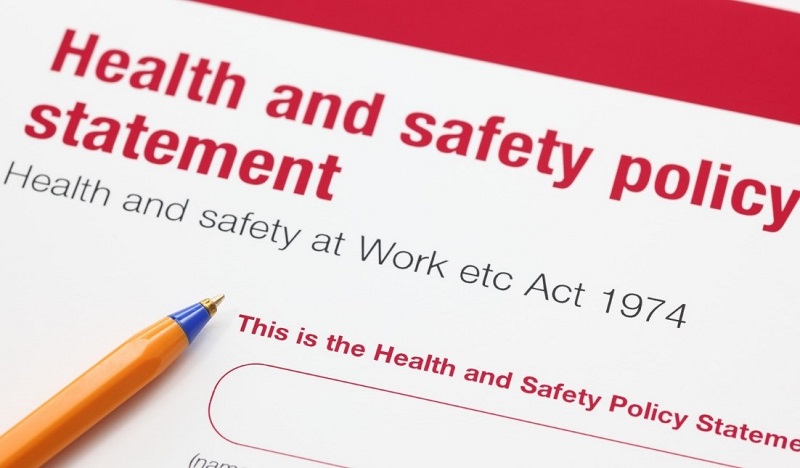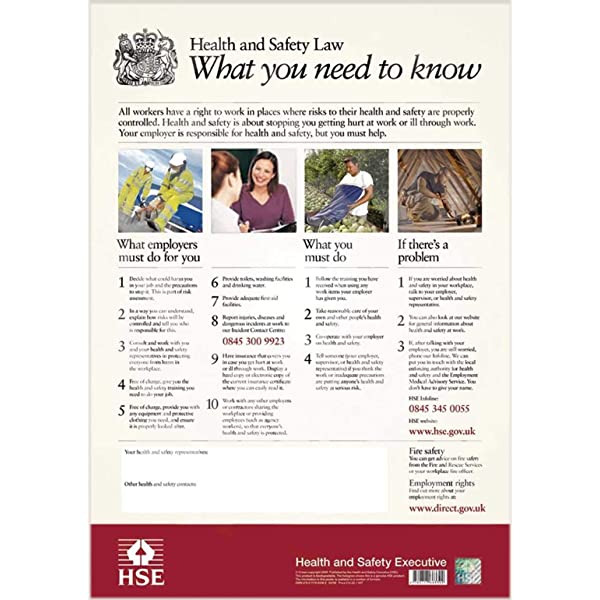Every employer has a duty to look after the health and safety of anyone who may be affected by their business activities. The duties for small businesses are just the same as those for larger businesses. This may seem overwhelming, but getting things in place for small businesses might be a lot easier than you think.
Listed below are the 10 things you need to have in place to manage health and safety effectively. If you have a small, low risk organisation then getting these in place will be relatively easy. For larger, higher risk businesses it may take a bit more work but it will be worth it in the long-run.
Compare your businesses health and safety management against this list – how well are you doing?
Appoint a Competent Person
The law requires that every business has access to a Competent Person to provide health and safety advice to enable the business to meet the requirements of health and safety law. That person should have sufficient knowledge, experience, and training to allow them to fulfil that role. The abilities of the Competent Person should meet the complexity and specifics of the help you need. Where possible, it is preferable that a Competent Person is appointed from within the businesses employees, that way they are familiar with the work being carried out. Where that is not possible, a Competent Person from outside of the organisation can be appointed. This requirement applies to all businesses that has two or more people working in it.
Set your Health and Safety Policy
This is a simple document that sets out your commitment to managing health and safety, identifies who has specific responsibilities for health and safety, and the arrangements in place to meet your commitments. Any business that has 5 or more employees must have a written health and safety policy. But I recommend that all businesses have a written policy so that you and your employees are clear on your approach to managing safety.

Assess and manage your risks
You need to think about what harm may be caused and who could be harmed by your business activities. You then need to put in place steps to reduce the risk of harm to as low as reasonably practicable. If you have less than 5 employees you don’t need to create a written record of your assessment, but you still need to go through the process of carrying out the risk assessment. Check out the Risk Assessment page to see what sort of assessments you might need.
Consult your employees
Employers have a duty to consult with employees on matters relating to their health and safety. Note that for this purpose, if you engage self-employed contractors they may be considered as employees under health and safety law and you must consult with them too. This consultation should be a two-way conversation, where you give information to your employees about health and safety arrangements and you give your employees opportunity to give feedback and suggestions before any new measures are introduced or changes are made.

Provide information, instruction and training
The phrase ‘information, instruction and training’, often abbreviated to I,I&T, crops up in lots of health and safety legislation. Providing information means telling people about the risks and precautions in place, instruction means telling people what they should do, and training means formal or informal learning to allow the person to keep themselves safe. This may be as simple as a health and safety induction when a new employee starts work, right up to details needed for complex tasks like entering a confined space. You need to provide information, instruction, and training to anyone who may be affected by your activities, not just your employees.
Provide welfare facilities
You must provide access to a suitable number of toilets and handwashing facilities with towels or a hand drying, including access for people with disabilities. You also need to provide drinking water, somewhere to rest and eat meals and if special clothing is needed for work, somewhere to change and store clothing.
Have emergency arrangements in place
The most obvious emergency plan to have in place is a fire evacuation plan, but you also need to consider other emergencies that can arise in your business. For instance, spills of chemicals, paints and oils in workshops, how to deal with violent customers in retail settings, etc. You also need to have a plan of how to respond to workplace accidents, injuries, and ill-health. Make sure you have the correct number of First Aiders or Appointed Persons available, correctly stocked first aid kits, and clear arrangements for calling the emergency services if needed.
Display the Health and Safety Law poster
Employers are required by law to display the health and safety law poster in each of their premises or give each of their employees the equivalent information in a leaflet. The poster and leaflets are available on the HSE website. The poster tells workers what they and their employers need to do to keep people safe at work.

Have Insurance in place
If you have any employees you are required by law to have Employers Liability Insurance in place (there are a few exceptions to this for family run businesses). You may also want to have Public Liability Insurance in place, this is not compulsory in the UK, but it can protect you financially if somebody takes legal action against you for injury or property damage.
Keep up to date
Managing health and safety is a moveable feast. You need to have a process in place to review your health and safety management against any changes in legislation, regulations and guidance, if you make any changes to your workplace or the way you work, after an accident or incident, and periodically to make sure it stays relevant.
Taking these steps will mean that you, your employees, and any other people affected by your activities will be well protected.
If you found this useful, then why not sign up to my weekly H&S roundup to get updates, news and tips from the world of health and safety direct to your inbox.
Got any questions about managing health and safety at work?

